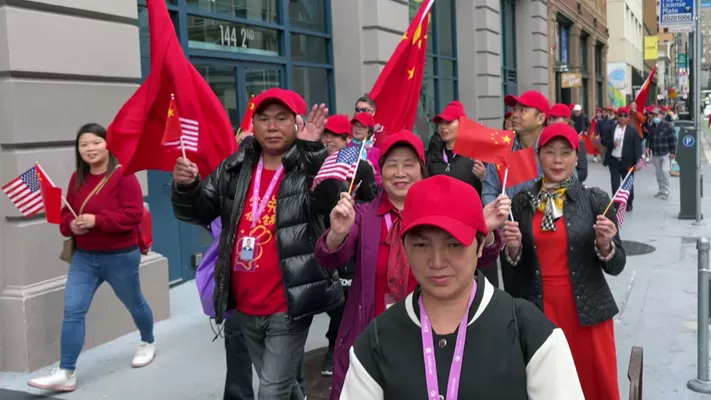“My hometown is in Guizhou. I hope that traditional handicrafts such as Miao embroidery and batik will have the opportunity to go global, so that the craftsmanship and ingenuity of Guizhou Miao embroiderers and painters can be passed on.” Liu Yali, president of the Northwest Guizhou Chamber of Commerce in the United States, said in an online interview with a reporter from China News Service.
In 2018, Liu Yali launched her own art clothing brand “Xiu”. In order to have a deeper understanding of Miao embroidery and batik, Liu Yali visited 16 towns in Guizhou for research and investigation. “Miao women have learned batik and embroidery since childhood, and they have been passed down from generation to generation.” She said that she visited local craftsmen door to door, carefully observed their works, recorded each pattern and needlework, and listened to the stories and meanings behind them.
Take Miao embroidery as an example. Under the skillful hands of the embroiderers, various auspicious symbols such as bird patterns, dragon patterns, and butterfly patterns emerge on the dark blue cotton cloth, as smooth as satin. Liu Yali said that Guizhou Miao embroidery has delicate needlework and complex craftsmanship, emphasizing the beauty of symmetry. Various fish patterns are very common, implying “many children and good fortune”. Miao women also like to decorate their clothes with colorful butterfly patterns. This tradition originates from the legend that “Mother Butterfly gives birth to all things”, symbolizing the beautiful wish for peace and happiness.
“Due to the numerous branches and wide distribution of the Miao people, the embroidery works are also different.” Liu Yali said that Miao women have sketched out a world with their own hands. Countless exquisite patterns contain reverence for nature and insights into life and festival customs. “Every time I see them wearing their carefully made costumes, their sense of ritual and optimism about life infect me, and I want to do something to improve their living conditions.”
“From design, draft, material selection, to batik or embroidery, the process is complicated and interlocking, and no corners can be cut, so as to ensure the handmade value of the clothing.” In Liu Yali’s view, only slow work can produce fine work, and only after the precipitation of time can a fine product be created. “Take the production of Shui nationality horsetail embroidery and Miao nationality broken thread embroidery clothing as an example. It takes 7 embroiderers to work at the same time and takes 2 months to complete.” She said that while women take care of the elderly and children at home, they inherit traditional skills and earn income through batik and embroidery.
In 2022, Liu Yali cooperated with Guizhou craftsmen to try to integrate batik into silk fabrics. She recalled that cotton cloth is thick and silk is thin, and the painters need to practice repeatedly to improve the stability of the wax knife painting on silk. “In addition, traditional methods often have the problem of uneven dyeing. After trying many methods, we solved this problem by combining traditional plant dyeing and indigo dyeing technology. While retaining traditional handicrafts, it is more in line with modern aesthetics and market needs.”
Recently, Liu Yali is preparing for the upcoming first international fashion week in Washington State, USA. “I hope that foreign audiences can see 50 sets of clothing completed by Miao embroiderers and painters, and feel the fashion charm of “ethnic style” up close.”

